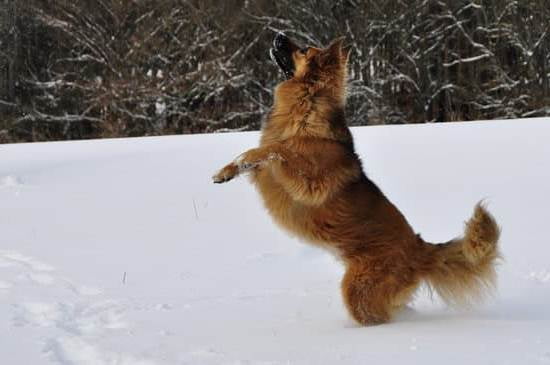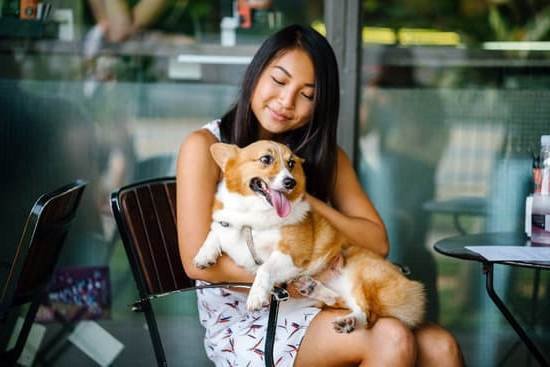Potty training a dog from a puppy mill can be a challenging and sensitive process that requires patience, understanding, and specific techniques tailored to the dog’s unique background. Dogs that come from puppy mills may have experienced trauma, neglect, and lack of proper care, making it harder for them to trust humans and adapt to new environments.
When it comes to potty training these dogs, establishing trust and building a bond is crucial. Creating a safe and secure environment where the dog feels comfortable and secure is essential in helping them learn where they should go potty. This process may take longer than with other dogs, but with time and dedication, progress can be made.
Patience and consistency are key principles when potty training a dog from a puppy mill. These dogs may have never been exposed to proper training or routines before, so it’s important to approach the process with compassion and understanding. Setting a routine and using positive reinforcement techniques can help the dog learn what is expected of them in a gentle and effective way.
Establishing Trust and Building a Bond
When potty training a dog from a puppy mill, establishing trust and building a bond is crucial in creating a safe and secure environment for the dog to feel comfortable enough to learn. Dogs that come from puppy mills may have experienced trauma, neglect, and lack of socialization, making it essential to show them love, patience, and understanding during the training process.
To help your dog feel safe and secure, consider creating a designated potty area in your home where they can eliminate comfortably. This could be a spot with easy access outdoors or even an indoor spot with pee pads or artificial grass. Consistency is key in potty training, so ensure that the designated area remains the same throughout the training period.
In addition to setting up a designated potty area, providing your dog with their own safe space like a crate or bed can also help them feel secure. Make sure this space is cozy, quiet, and free from any potential stressors. By offering a consistent routine, positive reinforcement, and a nurturing environment, you can help your dog overcome their past experiences from the puppy mill and successfully learn how to potty train.
Patience and Consistency
Potty training a dog from a puppy mill can present unique challenges due to the potential psychological issues associated with their previous living conditions. Patience and consistency are key principles that play a crucial role in successfully potty training these dogs. Understanding that the dog may have never been properly trained or lived in a safe environment before, it is important to approach the training process with empathy and understanding.
In order to effectively potty train a dog from a puppy mill, it is essential to establish a routine that the dog can rely on. Consistency in taking them out at regular intervals, feeding them at specific times, and providing adequate opportunities for bathroom breaks can help the dog understand what is expected of them. By setting a structured schedule, you are helping the dog feel safe and secure in their new environment, which is crucial for successful potty training.
Positive reinforcement techniques are especially important when potty training a dog from a puppy mill. Reward-based training methods such as giving treats, praise, or toys when the dog goes to the bathroom outside can help reinforce good behavior.
It is important to remember that these dogs may have never experienced positive reinforcement before, so patience and consistency in using these techniques are key. By creating a positive association with going to the bathroom outside, you are helping the dog understand what behavior is desired from them.
| Patience and Consistency | Potty Training Tips |
|---|---|
| Establishing routine | Take your dog out regularly |
| Positive reinforcement | Reward good behavior with treats or praise |
Setting a Routine
Establishing a Consistent Schedule
One of the crucial aspects of potty training a dog from a puppy mill is establishing a consistent routine. Dogs from puppy mills may not have had the opportunity to learn basic habits and routines, so it’s important to create a structured schedule for them. This includes feeding times, potty breaks, playtime, and rest periods. By following a predictable routine, your dog will have a clear understanding of when it’s time to go outside to eliminate.
Using Cue Words and Signals
In addition to maintaining a consistent schedule, using cue words and signals can also aid in potty training your dog. Choose specific words or phrases that you will use when you want your dog to go potty. By consistently using these cue words each time you take your dog outside, they will start associating the cues with the action of eliminating. This can help streamline the communication between you and your dog during the training process.
Keeping a Potty Training Journal
To track your progress and identify patterns in your dog’s potty training journey, consider keeping a potty training journal. Note down the times when your dog successfully eliminates outside, as well as any accidents that may occur indoors.
By reviewing this information regularly, you can adjust your routine or training methods as needed. A potty training journal can be particularly helpful when dealing with dogs from puppy mills, as it allows you to understand their unique needs and behaviors better while providing insights into their progress.
Positive Reinforcement Techniques
Choosing the Right Rewards
When implementing positive reinforcement techniques, it is crucial to choose the right rewards for your dog. This can vary from tasty treats, verbal praise, or a favorite toy – whatever motivates your dog the most. By using high-value rewards that the dog enjoys, you are reinforcing the behavior of using the potty area and increasing the likelihood of them repeating it in the future.
Consistency Is Key
Consistency is essential when utilizing positive reinforcement techniques for potty training. Make sure to reward your dog every time they use the designated potty area correctly. Consistent rewards will help reinforce the desired behavior and establish a routine for your dog. Additionally, be prompt in providing rewards immediately after they have accomplished the task to ensure that they make a clear connection between their action and the reward.
Transitioning to Verbal Praise
As your dog becomes more familiar with using the designated potty area, you can gradually reduce their reliance on treats and transition to verbal praise as a reward. This helps in ensuring that your dog continues to exhibit good behavior even without expecting food rewards every time. Verbal praise can become a powerful motivator for your dog and strengthen your bond through positive interactions during potty training sessions.
Addressing Fear and Anxiety
Potty training a dog from a puppy mill can present unique challenges, especially when it comes to addressing any fear and anxiety that may stem from their previous experiences. It is important to understand that dogs coming from puppy mills may have been subjected to neglect, abuse, and lack of socialization, leading to deep-rooted psychological issues. Here are some strategies on how to help your dog overcome these obstacles and succeed in potty training:
- Creating a Safe Space: Start by establishing a safe and secure environment for your dog where they feel comfortable and protected. Provide them with a cozy bed, toys, and access to food and water in a quiet area of your home.
- Gradual Exposure: Gradually expose your dog to new experiences, people, and surroundings at their own pace. This will help build their confidence and reduce anxiety triggers that may lead to accidents during the potty training process.
- Positive Reinforcement: Use positive reinforcement techniques such as treats, praise, and affection to reward your dog for exhibiting desired behaviors. This will help boost their self-esteem and create a positive association with the potty training process.
Dealing with fear and anxiety requires patience, understanding, and consistent effort on your part as the owner. By addressing these potential psychological issues head-on and providing a nurturing environment for your dog, you can help them overcome past traumas from their time in a puppy mill. Remember that every small step towards progress in the potty training journey is a significant achievement worth celebrating.
Dealing With Accidents
One of the first steps in handling accidents during potty training is to remain calm and avoid scolding or punishing the dog. Reacting harshly can lead to fear and anxiety, making it even more challenging for the dog to understand what is expected of them. Instead, focus on reinforcing positive behavior by rewarding the dog when they eliminate in the appropriate spot. This will help them associate going potty outside with praise and treats.
Consistency is key when dealing with accidents. Make sure to take your dog out frequently, especially after meals and naps, as well as first thing in the morning and last thing at night. If an accident does happen inside, clean up the mess thoroughly to remove any lingering scent that might encourage repeat incidents. By sticking to a routine and offering positive reinforcement, you can help your dog understand where they should go potty and reduce accidents over time.
| Key Points | Dealing With Accidents |
|---|---|
| Stay Calm | Avoid scolding or punishing the dog for accidents |
| Consistency | Follow a regular schedule for bathroom breaks |
| Reward System | Use positive reinforcement when they go potty outside |
Additional Resources and Support
For dogs coming from puppy mills, the transition to a new home and the process of potty training can be especially challenging. It is important to recognize that these dogs may have experienced trauma and neglect, which can affect their ability to trust and adapt to new environments. In such cases, seeking professional help and guidance can make a significant difference in the success of potty training efforts.
Professional trainers and behaviorists who specialize in working with rescue dogs or those from puppy mills can provide valuable insights and strategies on how to approach potty training in a gentle and effective manner. They can assess the dog’s individual needs, including any underlying fear or anxiety issues, and tailor a training plan that takes into account their unique history and temperament.
Additionally, professional help can also offer support for addressing any behavioral challenges that may arise during the potty training process. Whether it’s dealing with accidents, reinforcing positive behaviors, or managing anxiety-related issues, having a knowledgeable expert by your side can help you navigate through obstacles more effectively.
By working closely with a professional, you can ensure that you are providing the best possible care for your dog as they learn how to potty train after coming from a puppy mill.
Remember, every dog is different, and what works for one may not work for another. Seeking professional help does not mean you have failed as a pet owner; rather, it shows your commitment to providing the best care for your furry companion. With the right guidance and support, you can overcome the challenges of potty training a dog from a puppy mill and help them thrive in their new loving environment.
Celebrating Success
Potty training a dog from a puppy mill can be a challenging and complex process due to the trauma and neglect they may have experienced in their past. Establishing trust and building a bond with the dog is crucial in creating a safe and secure environment for them to learn and thrive. Patience and consistency are key principles to keep in mind throughout the training process, understanding that progress may be slow but steady.
Setting a routine plays an essential role in potty training, as dogs thrive on structure and predictability. By maintaining a structured schedule for feeding, walks, playtime, and bathroom breaks, you are helping the dog anticipate when it’s time to eliminate outside. Positive reinforcement techniques such as praise, treats, or toys can help reinforce good behavior and encourage the dog to continue using the designated potty area.
It is important to address any fear or anxiety that the dog may have due to their experience in a puppy mill. Be patient and provide reassurance as they navigate through their journey of learning where to go potty. Accidents are bound to happen during the training process, but it’s crucial to remain calm and handle setbacks with grace.
Seeking additional resources or professional help when needed can make a significant difference in your dog’s progress. Celebrating success by recognizing milestones and achievements along the way will not only motivate you but also strengthen your bond with your furry companion.
Frequently Asked Questions
Can You Potty Train a Puppy Mill Dog?
Potty training a puppy mill dog can be challenging due to the lack of structure and socialization they received in the mill. It requires patience, consistency, and positive reinforcement to help them learn appropriate bathroom habits.
Are Puppy Mill Dogs Harder to Train?
Puppy mill dogs may be harder to train compared to dogs from reputable breeders or shelters. They often come with behavioral issues such as fear, anxiety, and lack of trust in humans. Building their confidence and earning their trust is crucial for successful training.
How Do You Transition a Puppy Mill Dog?
Transitioning a puppy mill dog into a loving home involves creating a safe environment, establishing routines, and providing plenty of patience and understanding. Slow introductions to new people, animals, and environments are key to helping them feel secure and comfortable in their new surroundings.

Welcome to the blog! I am a professional dog trainer and have been working with dogs for many years. In this blog, I will be discussing various topics related to dog training, including tips, tricks, and advice. I hope you find this information helpful and informative. Thanks for reading!





